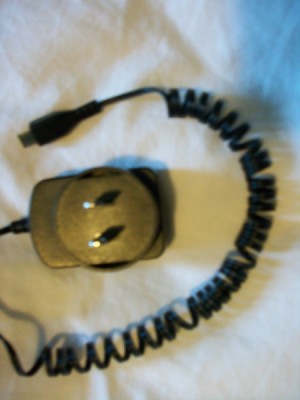
 Editor's Note: After Lilac expressed concern about this tip, we did some research and asked an electrician for their opinion. Basically, this process should be only attempted with cords that carry a low voltage, like USB charging cables. Even then, there is some risk of heat build up, damage to the cord or the device being charged. It should definitely not be done to larger, thicker cords that carry more current. Even loops of extension cord have been known to cause fires. We advise against using this tip for anything but a decorative or craft purpose. It is safer and better for the life of your expensive electronics to leave charging cords in their original condition.
Editor's Note: After Lilac expressed concern about this tip, we did some research and asked an electrician for their opinion. Basically, this process should be only attempted with cords that carry a low voltage, like USB charging cables. Even then, there is some risk of heat build up, damage to the cord or the device being charged. It should definitely not be done to larger, thicker cords that carry more current. Even loops of extension cord have been known to cause fires. We advise against using this tip for anything but a decorative or craft purpose. It is safer and better for the life of your expensive electronics to leave charging cords in their original condition.
I hated my drawer of various phone, camera, and other power cords and remembered a trick I heard of. Wrap your cord around a straw or pencil and tape it on both ends, then use a hair dryer to heat the cord up for about 4 minutes. I kept putting my hand under the air to make sure it wasn't getting hot enough to melt anything. Let the cord cool completely and remove the tape from both ends. Wa-la! A coiled, much neater power cord!
Add your voice! Click below to comment. ThriftyFun is powered by your wisdom!
Never, Never do this. A cord coiled allows electricity to flow faster making more heat. Phones do not carry much power so there is no danger there.
I use paper rolls from toilet paper and paper towels for cord storage. I just loosely loop the cord in a figure 8 and slide the roll over it like a napkin ring. The cardboard roll can be decorated or used to m make notes as to cables length, brand, type, use, or power output. fabric or wrapping paper dress them up nicely. The heavy rolls from foil, wax and parchment paper I use to store heavy duty extension cords.
Add your voice! Click below to comment. ThriftyFun is powered by your wisdom!